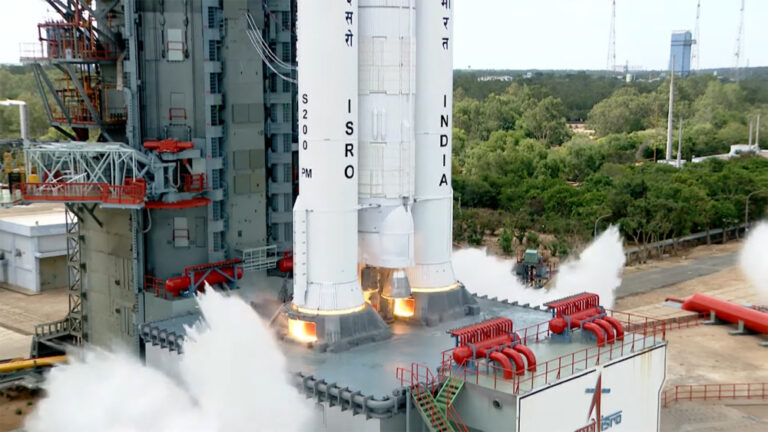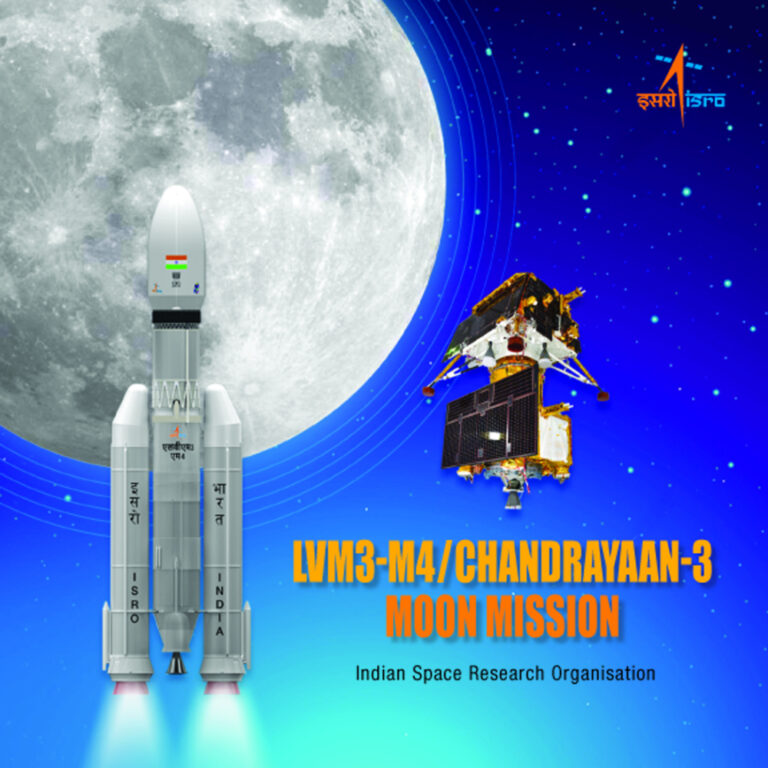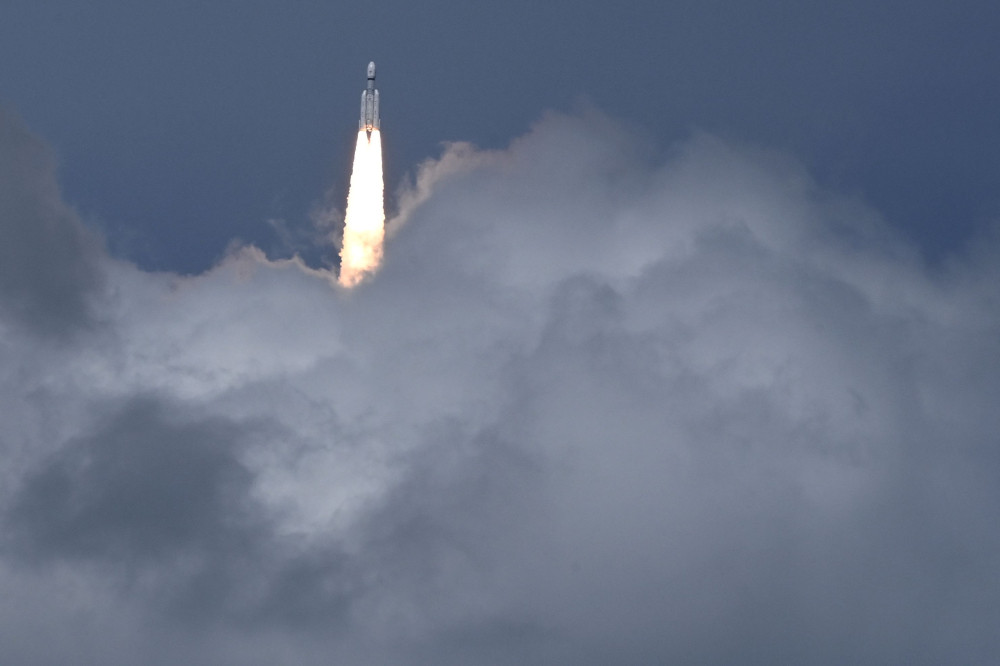Kathmandu 14 July : The successful launch of India’s Chandrayaan-3 mission has taken place. The LVM3 rocket launched the Chandrayaan into space from the Satish Dhawan Space Centre in southern India at 2:35 AM Indian Standard Time.
After the successful launch, the Chief of the Indian Space Research Organisation (ISRO), S. Somnath, confirmed the success of the mission. Speaking during the live broadcast by ISRO, Somnath stated, “Our LVM3 has successfully placed Chandrayaan-3 in the Earth’s orbit. In a few days, Chandrayaan-3 will leave Earth’s orbit and enter the lunar orbit.” According to ISRO, Chandrayaan-3 is expected to reach the lunar orbit on August 5. Once the timing and conditions are favorable, ISRO will land the rover on the moon.

Chandrayaan-3 mission aims to conduct further studies on the moon, including its chemical and natural conditions.
ISRO plans to land Chandrayaan-3 on the southern pole of the moon on August 23. So far, no country has reached the southern pole of the moon. Only the United States, Russia, and China have reached the moon’s surface before.
Four years ago, there was an accident during the planned landing of Chandrayaan-2 on the moon. In response to that, India has developed Chandrayaan-3. ISRO has conducted various tests to examine all kinds of situations that could lead to accidents. For this mission, sensors, algorithms, engines, calculations, and all sorts of weaknesses have been studied.
This time, ISRO’s scientists are determined to touch the surface of the moon with the Vikram lander. Chandrayaan-3, propelled by ISRO’s LVM-3 rocket, has a range of 43.5 meters longer than its predecessor. It is also known as the “Fat Boy.” This rocket is the largest and most powerful rocket ever built by India. It has successfully completed six missions in the past.
India is the fourth country to reach the orbit of Mars. In 2014, it successfully placed its Mars Orbiter in orbit around the red planet.
On September 7, 2019, Indian Prime Minister Narendra Modi visited the Central Office of the Indian Space Research Organization (ISRO) to witness the moment when the Vikram lander of Chandrayaan-2 touched the surface of the moon. While watching the event live, suddenly lost contact with the lander and the Indian scientists’ dream of touching the surface of the moon was also shattered.
The Chief of ISRO, K. Sivan, became emotional and tears welled up in his eyes. Modi consoled him by patting his back. Sivan, who was born into a farming family in Tamil Nadu and led the mission, became emotional, and the video of Modi consoling him was watched by millions.
Former Indian Prime Minister Atal Bihari Vajpayee had announced the Chandrayaan mission five years earlier, in 2008, and the first mission of Chandrayaan began. Under that mission, the lunar orbiter reached the lunar orbit. It is estimated that India spent around 386 crores (3.86 billion) rupees for that project.
The rocket, measuring 43.5 meters in length, is known as “Fat Boy.” It is the largest and most powerful rocket that India possesses. It has successfully completed six missions in the past.

The Chandrayaan-3 mission consists of three modules: propulsion, lander, and rover. The Vikram lander carries the Pragyan rover inside it. During the launch, solid propellant is used in the first stage, followed by liquid propellant in the second stage, and hydrogen and liquid oxygen as fuel in the third stage.
Approximately 16 minutes after the rocket’s launch, at 2:51 AM according to Indian Standard Time, the “Fat Boy” will have reached an altitude of 179 kilometers from the Earth’s surface. After that, the Chandrayaan rocket will separate and impact the lunar surface about 5-6 times higher than the circumference of the Earth. At that point, the Chandrayaan spacecraft will be approximately 170 kilometers above the Moon’s surface and 36,500 kilometers away. It will then use the gravitational force to reach the Moon. The propulsion module accompanying the Chandrayaan will reach the Moon’s orbit about a month later, at a distance of around 100 kilometers from the lunar surface. Afterward, based on suitability, the Chandrayaan will land on the Moon’s surface.




COMMENTS